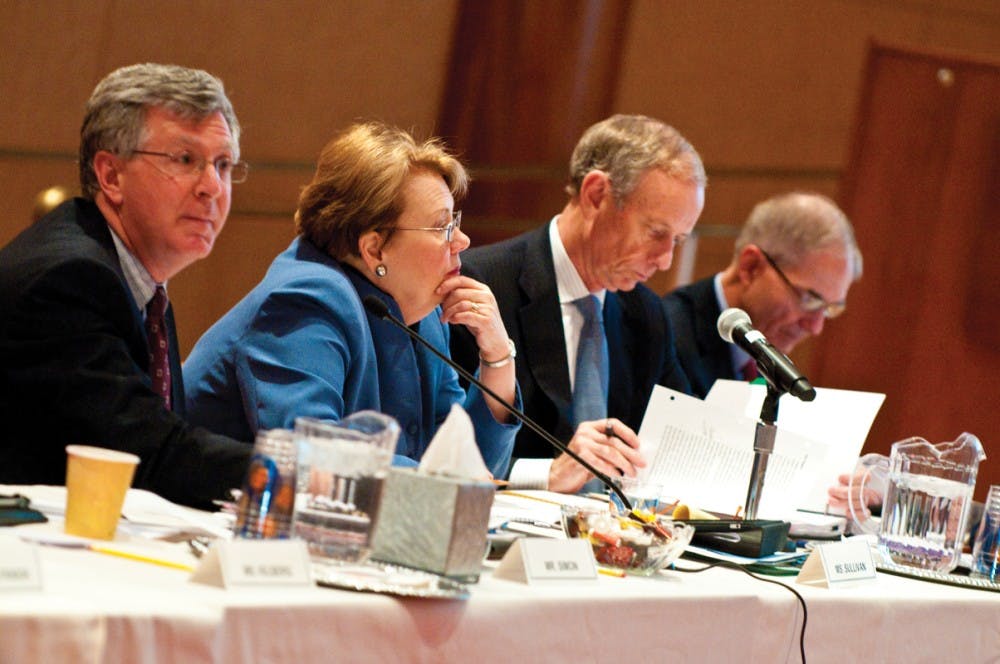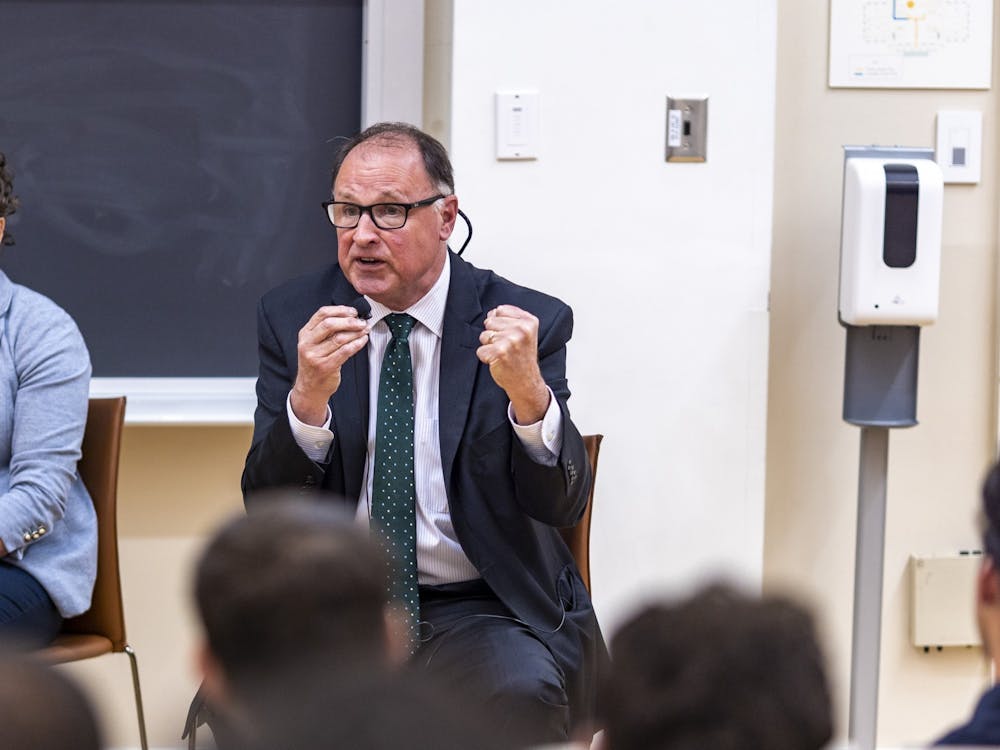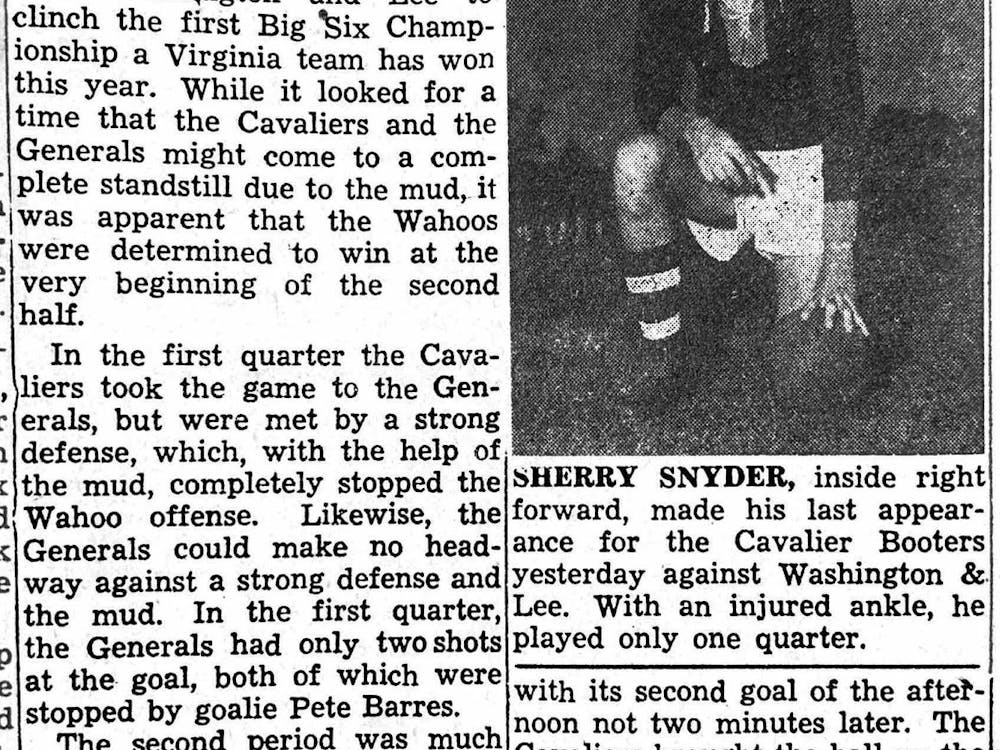The Board of Visitors’ finance committee Thursday announced new strategies for managing funds in support of University President Teresa Sullivan’s multi-year faculty salary plan. The program aims to increase faculty salaries by fiscal year 2014, including a $15 million increase in spending to hire teaching and research faculty members.
Total costs for the plan’s first year, including funds for additional faculty members in light of enrollment growth, amount to a budget increase of more than $33 million.
Finance committee chair Victoria Harker referred to the plan as a “work in progress.” Despite an assumed freeze on state appropriations and an estimated 2.1 percent decrease in research funding during the 2013-14 academic year, Colette Sheehy, vice president for management and budget, said the University is already prepared to pay for the first year of Sullivan’s plan.
Funding sources include tuition — which will remain below the approved increase for the coming year — state appropriations and reallocated operating savings. Gifts, grants, the endowment and clinical revenue will also contribute.
Chief Operating Officer Patrick Hogan assured the Board that the committee was looking beyond fiscal year 2014 for funding sources and ways to sustain the faculty salary plan. The Board has until its June meeting to prepare a final operating budget for the coming fiscal year.
A major reform that will help the University prepare for increased budget expenditures and allocate resources more effectively is the ongoing shift to a new internal financial model, which Sullivan’s administration has already been slowly integrating.
The revised system is one of decentralization. It takes funds previously allocated to the central administration to be sent from there to individual schools and services and instead directs funds straight to the schools, which then pay a tax to the central administration and also direct payments to service centers.
The finance committee’s stated goals of the new financial model are threefold: to align resources with activities, to promote prudent stewardship of University resources and to ensure transparent decision-making.
Sheehy explained the first goal in terms of the current “lack of alignment” that in the past has led to unnecessary spending. The library, for example, collects fines for overdue books, but the money collected does not go back to the library. The lack of incentive to track down or charge for the book led the libraries one year to stop collecting fines. No one in the administration was notified of this decision, and at the end of the year when costs were being calculated the books had to be paid for out of an exogenous fund pool.
One of the Board’s suggestions for addressing such an issue is to increase awareness of financial consumption by localizing it. Granting more power to the individual schools by direct revenue distribution from tuition and the state’s general fund, the Board will allow the deans and governing boards of each school to allocate costs as they see fit.
Currently, bills are paid without anyone being held accountable for the accrued expenses. Increasing transparency will incentivize efficient cost-saving practices, the committee contends.
During a question period, external affairs committee chair John Nau expressed concern about the potential tension that may arise between the central administration and individual schools. “You are kind of changing the psychology of management,” Nau observed.
Provost John Simon made clear that the internal financial model does not grant individual schools unlimited power. “This is not a hunting license … there are still approval processes,” Simon said.
Though the plan treats different schools as separate cost centers and aims to more closely match spending to revenue generation, the administration still expects different University entities to work as partners. “The University has goals that sit above the schools,” Simon said.
Addressing the concern that deans might be reticent to invest in other schools to start programs, Simon took on responsibility for encouraging cross-pollination of resources. “How you force the bridging — that is the job of the provost,” Simon said.







